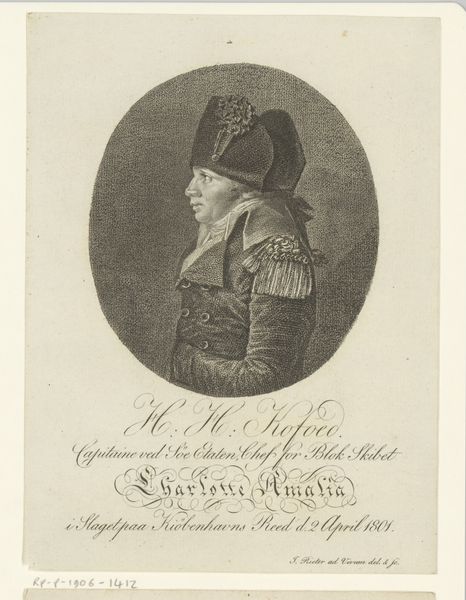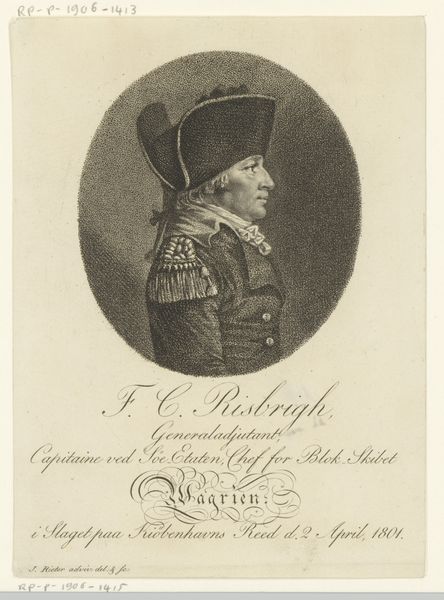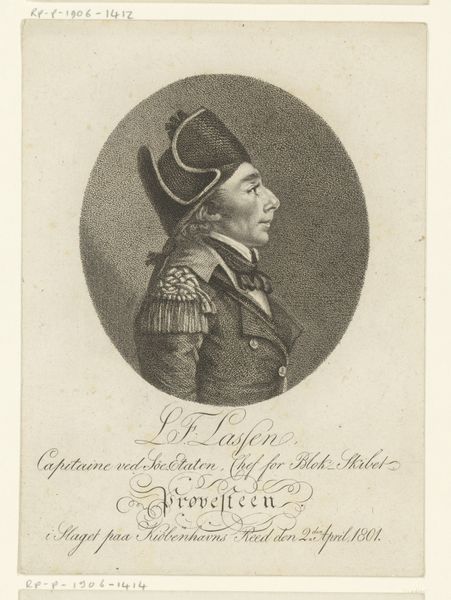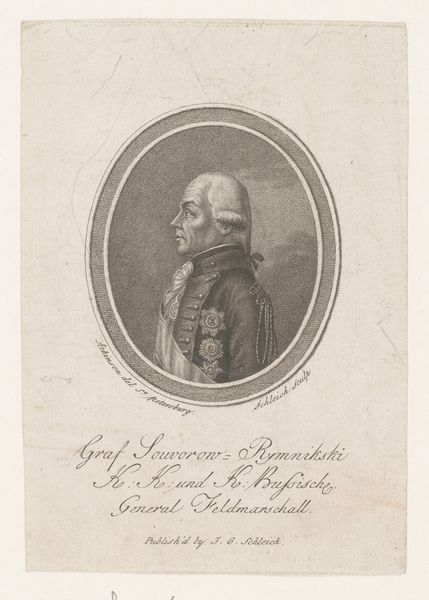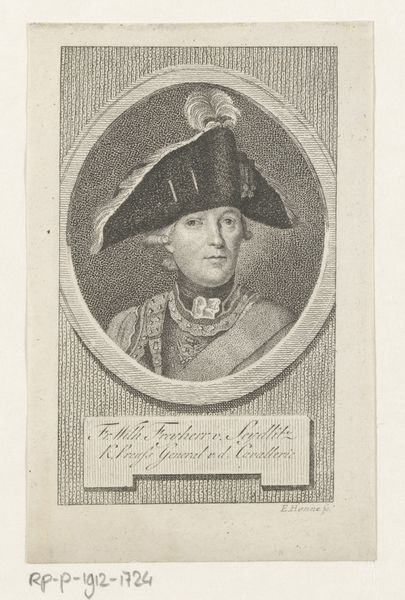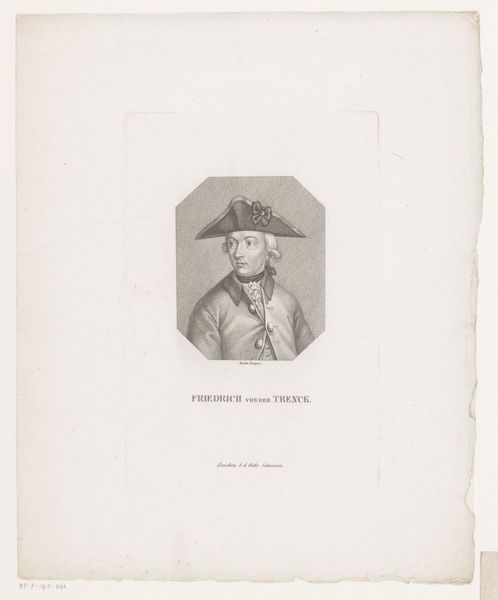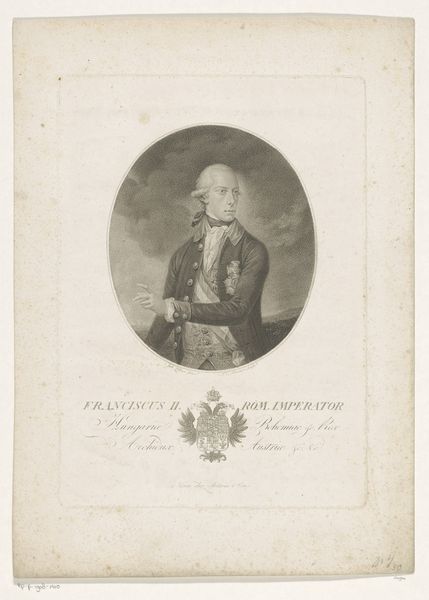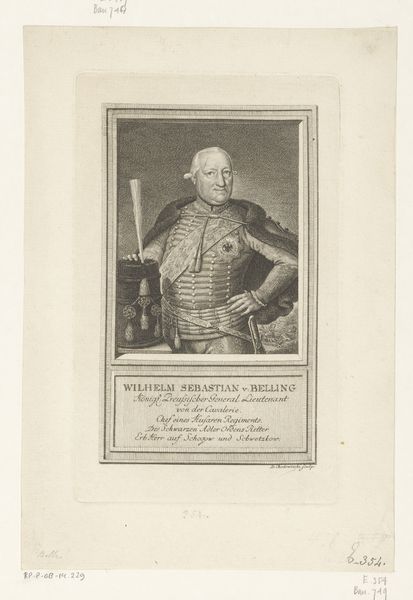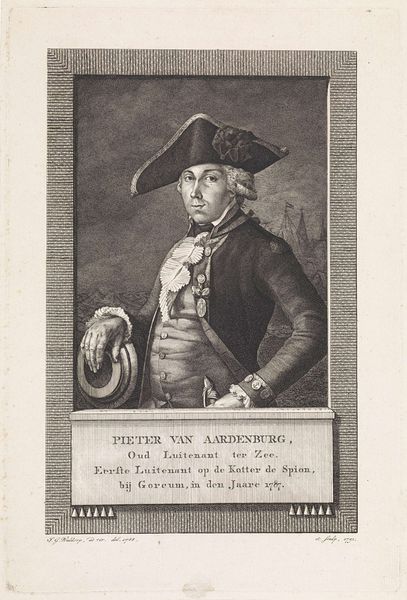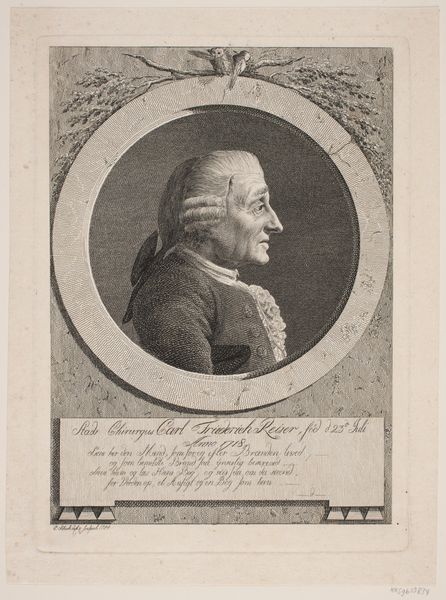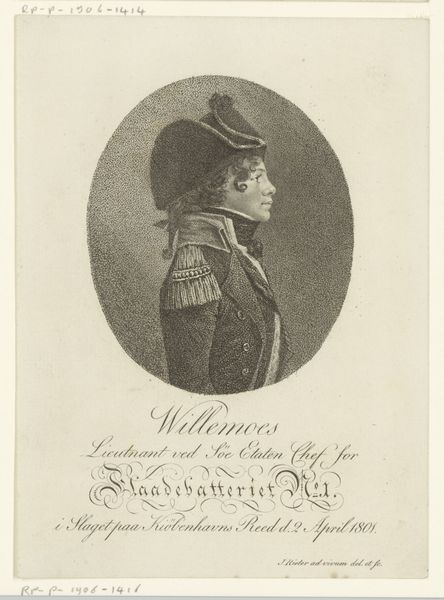
print, engraving
#
portrait
# print
#
romanticism
#
engraving
Dimensions: width 180 mm, height 136 mm
Copyright: Rijks Museum: Open Domain
This portrait of Captain Krabbe was made around 1800 by Johann Jakob Rieter, using etching and engraving on paper. Look closely and you'll see how the network of finely-etched lines creates tone and shadow. The process begins with coating a metal plate with a waxy ground, through which the artist scratches an image. Acid is then applied, biting into the exposed metal. The longer the acid bath, the deeper the line, and the more ink it will hold. The plate is then inked and pressed onto paper, leaving a permanent impression. It's a printmaking method that allows for the relatively quick reproduction of imagery, like this portrait of Captain Krabbe, celebrating his naval exploits. Prints like this one allowed for the broad distribution of information and imagery during a time of political upheaval and war. They democratized portraiture, making it available beyond the wealthy elite. So while this image depicts a man of power, the etching process itself speaks to a wider social shift, where knowledge and representation became more accessible. It’s a reminder that even traditional art forms are shaped by the social and economic contexts in which they're made.
Comments
No comments
Be the first to comment and join the conversation on the ultimate creative platform.
